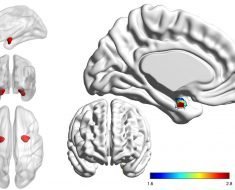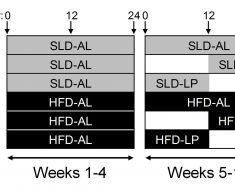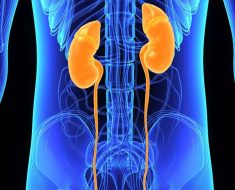Rheumatoid arthritis (RA) is a systemic inflammatory disease that may affect multiple joints leading to inflammation, pain, stiffness and swelling.
Pathology and Symptoms
When RA affects the foot and the ankle joint the synovium that lines the ends of the bones in the joints thickens and produces an excess of joint fluid. This excess fluid along with inflammatory chemicals that the immune system releases leads to swelling and damage to the cartilage that acts as a cushion within the joint leading to pain, and joint erosion.
The commonest foot problem seen with RA affects the forefoot. This includes the ball of the foot near the toes. The foot appears deformed and there are symptoms of pain, swelling, joint stiffness, and difficulty walking.
There may be presence of rheumatoid nodules that lead to pain when they rub against shoes or if they are pressed upon while walking.
In addition, toes may be dislocated; and they may appear deformed as hammer toes.
There is flat foot, ankle and foot pain, heel pain, bunions and pain over the Achilles tendon when the foot is affected with rheumatoid arthritis.
Diagnosis
Diagnosis of RA affecting the foot or ankle joints is similar to RA diagnosis in general. RA is diagnosed on the basis of a clinical examination as well as laboratory and imaging studies.
The diagnosis is initiated with a detailed history of the onset and severity of the symptoms as well as family history of rheumatoid arthritis or other autoimmune disorders.
The next step involves physical examination where the affected and other joints are examined for swelling, pain and signs of inflammation.
There are several patient based questionnaires and measures called health assessment questionnaires (HAQ) that measure patient disability and quality of life. In addition these questionnaires also measure the patient’s own perception of the disease burden.
There are batteries of tests that may be employed in the diagnosis, however, none of these are definitive.
Due to inflammation, blood tests such as C Reactive protein and Erythrocyte sedimentation rate (ESR) may be raised. These are however non specific markers of inflammation.
Rheumatoid factor is a relatively specific test. There is presence of this indicative factor in nearly 80% of all persons with rheumatoid arthritis. Presence of rheumatoid factor may not be detected in early stages of the disease. In addition around 1 in 20 healthy persons may test positive for rheumatoid factor. Thus presence of rheumatoid factor is not absolutely indicative of rheumatoid arthritis.
Several imaging studies like X rays, MRI scans and CT scans may be ordered to look at the extent of joint damage caused by the disease.
Treatment of RA affecting foot and ankle
The aims of treatment are twofold – to relieve the symptoms of the disease and to prevent the disease progression and joint damage.
-
To ease the symptoms pain relievers and anti-inflammatory agents are the primary mode of therapy. Non-steroidal anti-inflammatory drugs (NSAIDs) are the drugs used widely to control symptoms of rheumatoid arthritis.
-
To prevent progression of joint damage Disease-modifying anti-rheumatic drugs or DMARDs are widely used. These agents have a varied mechanism of action and they act by reducing joint swelling and pain, decreasing markers of acute inflammation in blood and halt the progressive joint damage. DMARDs include Methotrexate, Sulfasalazine, Leflunomide, Hydroxychloroquine, Gold salts and Ciclosporin. DMARDs however are also associated with a varying degree of side effects.
-
A newer approach is to use biological agents. TNF inhibitors were the first licensed biological agents including etanercept, infliximab, adalimumab and certolizumab. This was followed by monoclonal antibodies like abatacept, rituximab, and tocilizumab.
-
Supportive treatment includes exercise, joint protection, psychological support to help deal with the associated symptoms and disability.
-
Physiotherapy is an important part of therapy of debilitating arthritis. This helps maintain optimum joint flexibility and strength.
-
Assistive devices, such as a cane, walker, long shoehorn etc. may help cope with disability associated with RA. The surgeon may fit the patient with orthotic devices. These help cushion the rheumatic nodules and minimize pain when walking. They can also provide support to improve the foot’s mechanics. Accommodative shoes may be suggested to relieve pressure and pain and assist with walking.
-
The fluids from within the swollen joints may be aspirated or withdrawn to ease the pain. Corticosteroid injections may be given into the affected joints to prevent inflammation.
-
Surgery may be performed to retain joint function or prevent loss of joint function. Joint replacement therapy may be chosen. This is vital when joints fail.
Sources
- http://www.bjj.boneandjoint.org.uk/content/87-B/9/1171.full.pdf
- www.associatedfootandanklesurgeons.com/…/…rheumatoid_arthritis.pdf
- http://www.jfootankleres.com/content/pdf/1757-1146-5-2.pdf
Further Reading
- All Rheumatoid Arthritis Content
- What is Rheumatoid Arthritis?
- What Causes Rheumatoid Arthritis?
- Rheumatoid Arthritis Symptoms
- Rheumatoid Arthritis Diagnosis
Last Updated: Feb 27, 2019

Written by
Dr. Ananya Mandal
Dr. Ananya Mandal is a doctor by profession, lecturer by vocation and a medical writer by passion. She specialized in Clinical Pharmacology after her bachelor's (MBBS). For her, health communication is not just writing complicated reviews for professionals but making medical knowledge understandable and available to the general public as well.
Source: Read Full Article





